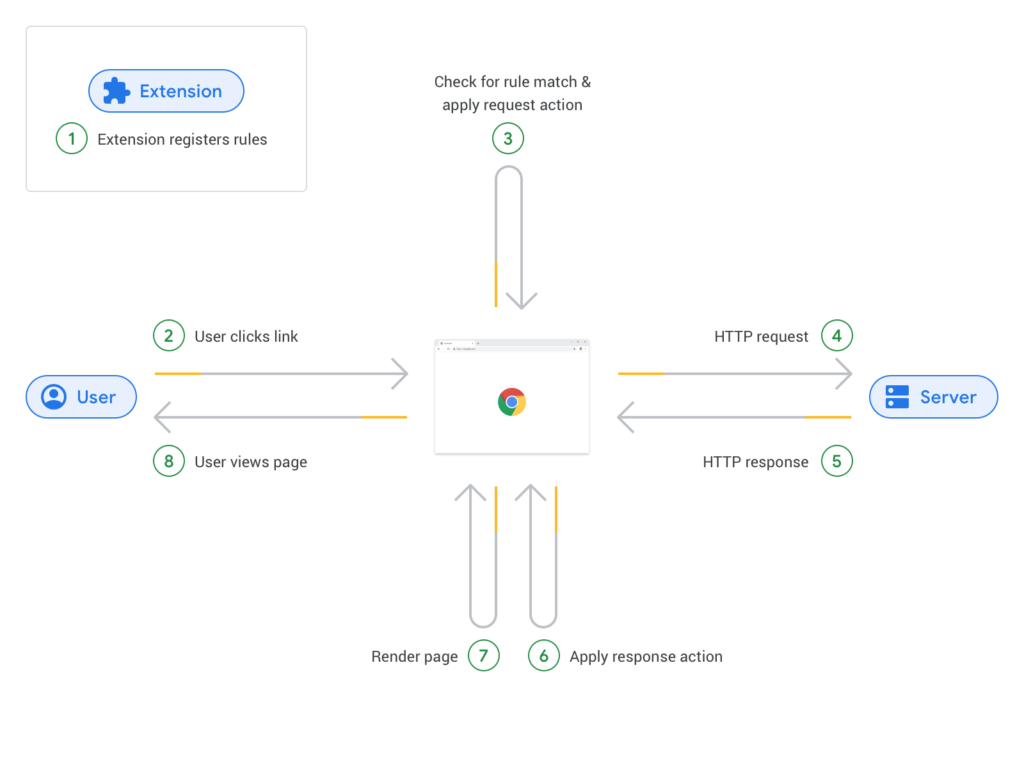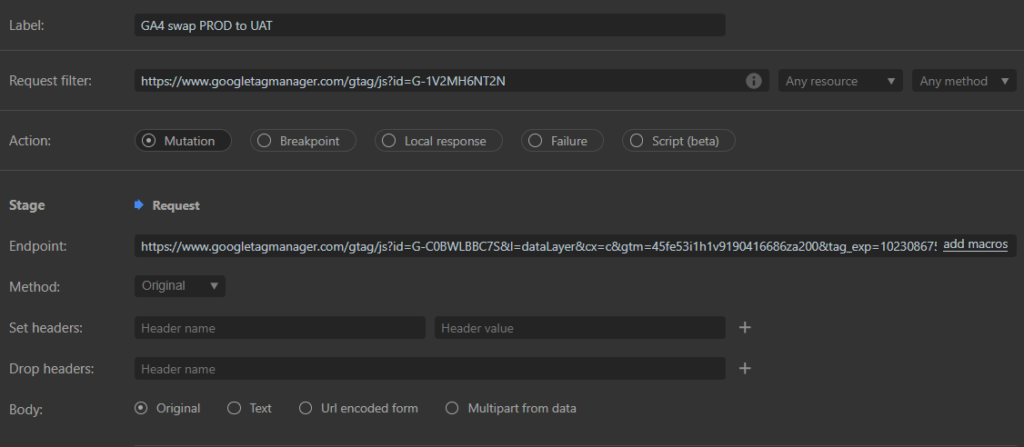If you’ve been using Resource Override to swap, block, or redirect your web content, you might have noticed that it’s no longer supported in the Chrome Web Store. Designed for Chrome Manifest v2, Resource Override can’t keep up with the recently enforced Manifest v3 (MV3) standards. This change has significant implications for many developers and web analysts, especially those who rely on request modification tools to fine-tune their web analytics implementations.
In this post, we’ll explore why Resource Override has ended, what Manifest v3 means for Chrome extensions, and how you can still override requests—either via Chrome’s native features or alternative extensions such as Requestly and Netify.
Why Resource Override Came to an End
Resource Override was once a go-to extension for marketers and analysts who wanted to:
- Debug analytics implementations by redirecting requests to local or alternative files.
- Block or modify requests on the fly without editing source code.
- Speed up testing by quickly swapping resources.
However, the developer recently confirmed on the Resource Override GitHub page that it will not be updated to comply with the new Manifest v3 requirements. As a result, Resource Override is no longer available or functional under the new Chrome policies. You can still visit the Web Store listing to see its history and reviews.
What Is Manifest v3 for Chrome Extensions?
Manifest v3 is the latest specification for Chrome extensions. It introduces a range of changes aiming to improve security, privacy, and performance. For instance:
- Stricter permissions model: Chrome now requires extensions to request access to specific resources more transparently.
- New service worker-based background scripts: Replacing persistent background pages with service workers.
- New rules for request interception and modification, affecting how developers implement content-blocking or modifying features.

You can learn more about how Manifest v3 might affect web analytics and tagging setups, including Google Tag Manager server-side, in our previous post on the topic: How GTM Free Version Might be Killed by Chrome Manifest v3.
Overriding Web Requests Using Chrome’s Native Feature
For those who primarily need to override resources locally, Chrome’s built-in DevTools provides an excellent alternative:
- Open DevTools and navigate to the “Sources” panel.
- Enable Local Overrides: See the official documentation on overriding web content locally for step-by-step instructions.
- Choose or create a local folder to store your overrides.
- Map the network requests you want to replace and point them to your local files.
Google’s official video tutorial is also handy if you’re new to local overrides. This approach is straightforward and works offline, making it ideal for tasks like debugging analytics scripts before pushing them live.
Pros:
- Completely free and built-in.
- Easy to set up for local files.
- No extra extensions required.
Cons:
- It only works locally on your own machine.
- Syncing overrides across multiple devices isn’t straightforward.
Solutions to Override Requests from URLs
What if you need to override a request from one URL to another? Or if your team needs to share the same request-modification setup across multiple devices? Here are two popular extensions to consider:
1. Requestly
Requestly is a freemium extension and web-based platform that lets you modify network requests on the fly. You can:
- Redirect, block, or modify headers and query parameters.
- Inject scripts or styles.
- Sync your rules across different browsers and devices.
Requestly’s online dashboard makes it easy to manage and share rules with your team, which is especially helpful if you’re collaborating on analytics debugging and QA.

Pros:
- Simple, user-friendly interface.
- Freemium model with additional features on paid plans.
- Effortless syncing and sharing.
Cons:
- Some advanced features require a paid subscription.
2. Netify
Netify is a completely free extension designed for local use. It allows you to set up URL-based redirections and modifications without an external account. It is easier to use that Requestly as it runs directly inside Chrome DevTools, without the need to create an account in an external website. However, it does not support multiple device syncing.

Pros:
- 100% free.
- Lightweight and straightforward.
- Local-only operation for maximum control.
Cons:
- No cloud sync across multiple devices.
- Fewer advanced features compared to Requestly.
Which Option Should You Choose?
Ultimately, your choice depends on your workflow:
- Local debugging and personal use: Chrome’s native overrides or Netify might be enough.
- Collaboration and cross-device sync: Requestly’s cloud-based features can save time and ensure consistency.
Either way, you can continue intercepting and modifying requests without Resource Override. Developers and analysts can rest assured that their ability to test tracking scripts, experiment with different setups, and debug analytics issues remains intact.
Key Takeaways
- Resource Override has ended because it was built on Manifest v2, which is no longer supported in the latest Chrome policies.
- Manifest v3 focuses on increased security, privacy, and performance—changing how developers implement request interception.
- Chrome’s native DevTools overrides is free and straightforward for local file overrides.
- Requestly (freemium, cloud-based) and Netify (free, local) both let you override URLs, each with its own benefits.
That’s all for today!